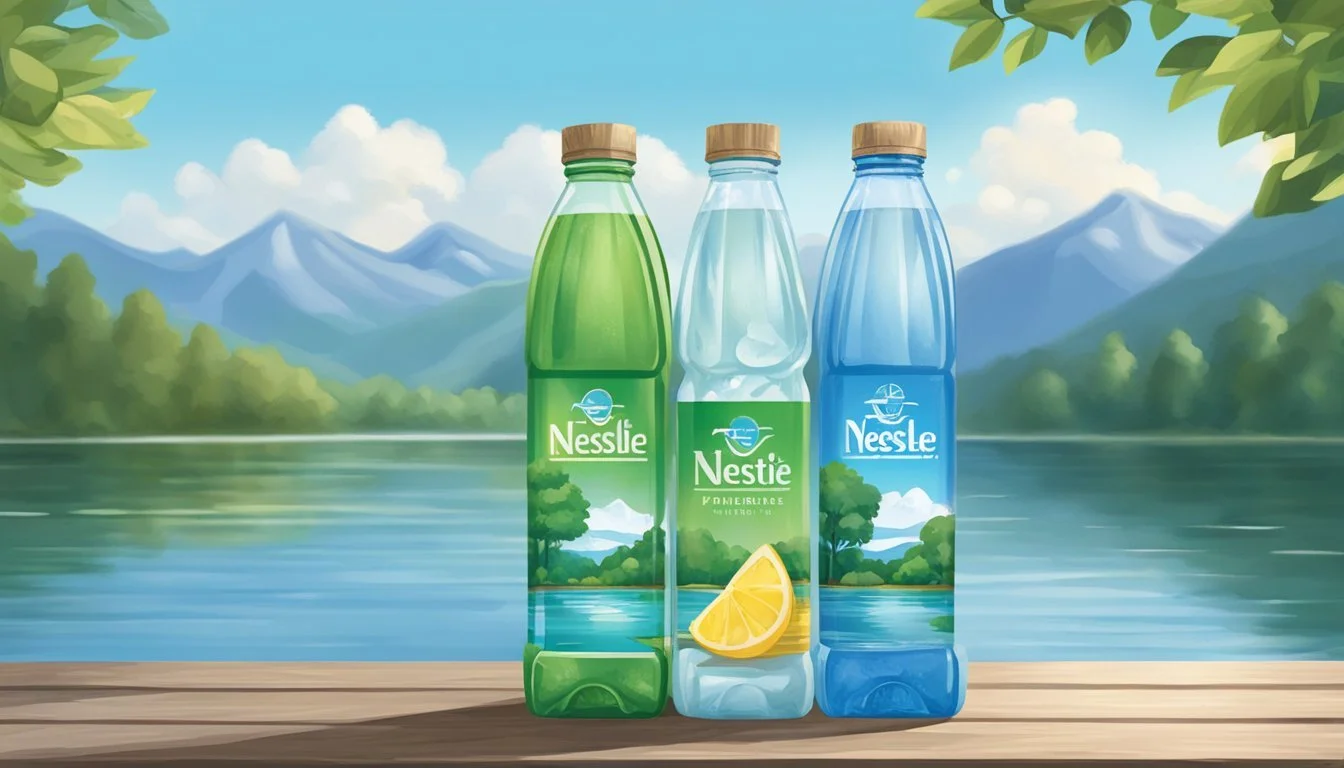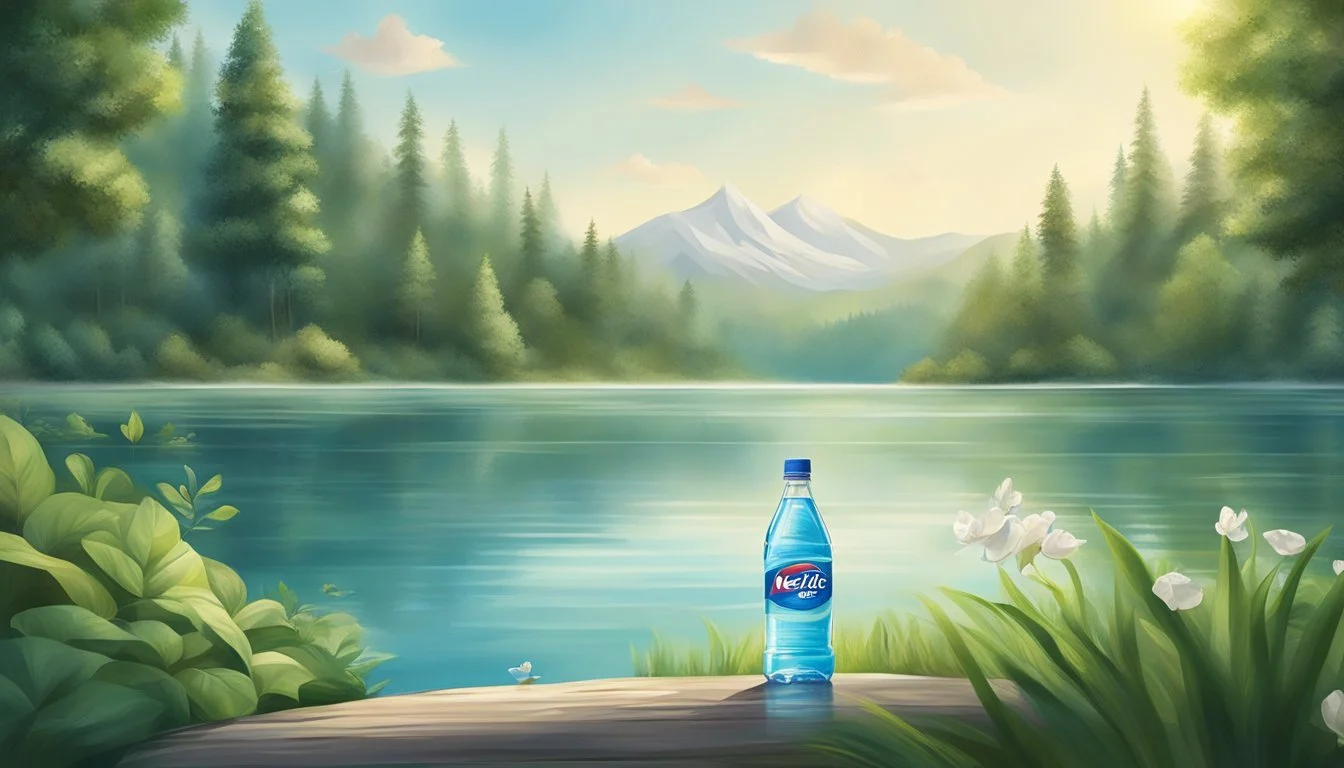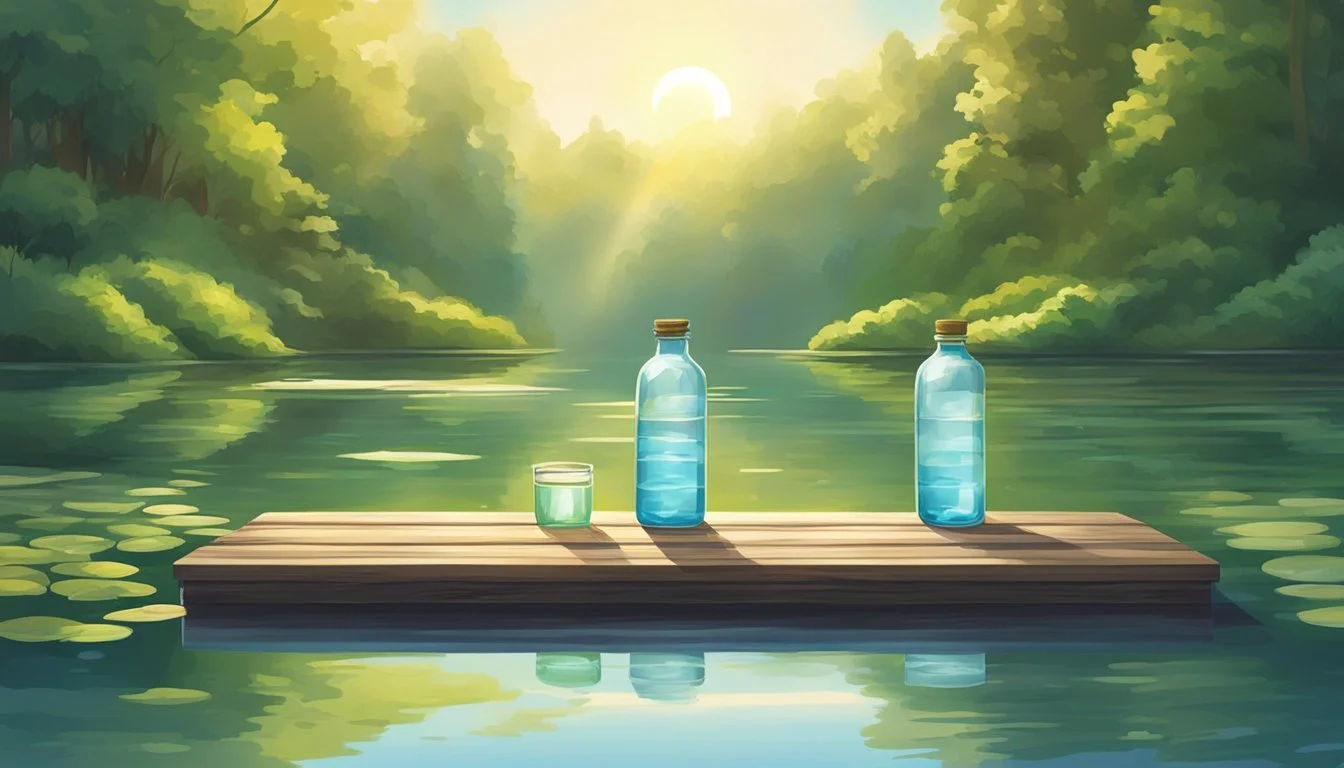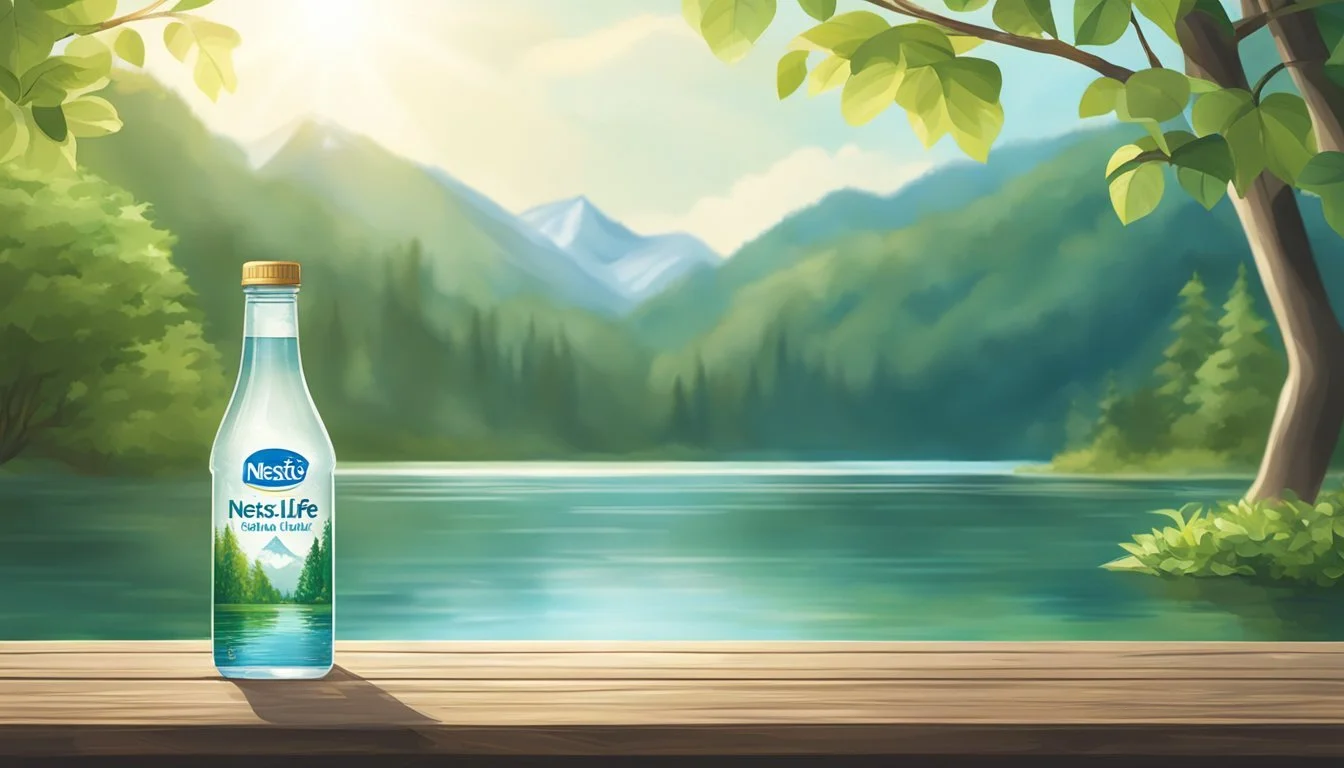Nestlé Pure Life vs. Crystal Lake
Evaluating the Best Bottled Water
When it comes to choosing bottled water, two popular options often come to mind: Nestlé Pure Life and Crystal Lake. Nestlé Pure Life, backed by the extensive reach of Nestlé Waters, goes through multiple-stage filtration and quality checks to ensure safety and taste. Crystal Lake, on the other hand, is noted for being sourced from protected springs, aiming to offer a fresh and pure taste.
For those seeking a clean and reliable bottled water option, Crystal Lake tends to outperform Nestlé Pure Life in taste tests and natural spring sourcing. While both brands adhere to stringent safety and filtration processes, consumers often gravitate towards the more natural and refreshing profile of Crystal Lake.
Additionally, the concern of microplastics is minimal with both brands, thanks to their rigorous quality control measures. However, taste preferences can be subjective, making it essential for readers to try both and decide which suits their palate best.
Understanding Bottled Water
Bottled water offers consumers a convenient and portable hydration option but not all bottled water is created equal. Various types and stringent regulations impact their safety and quality.
Types of Bottled Water
Spring Water: Sourced from natural springs, this water contains essential minerals and often requires minimal processing. It is collected directly from an underground formation.
Mineral Water: This water is rich in minerals like calcium, magnesium, and potassium. To be labeled as mineral water, it must contain at least 250 parts per million of total dissolved solids from a protected underground source.
Tap Water: Also known as municipal water, tap water is sourced from local systems and undergoes treatment to meet public health standards. Some bottled variants are simply purified tap water.
Artesian Water: This type of water is drawn from a well that taps a confined aquifer. Aquifers are layers of rock or sand that protect the water from pollution and contamination.
Purified Water: Purified water undergoes various processes such as distillation, deionization, or reverse osmosis to remove contaminants and impurities.
Each type offers different benefits, from natural mineral content to the assurance of purification processes.
Bottled Water Regulations
EPA and FDA Regulations: Bottled water must adhere to standards set by the Environmental Protection Agency (EPA) and the Food and Drug Administration (FDA). The EPA regulates public drinking water systems, while the FDA oversees bottled water as a packaged food product.
Quality Controls: Manufacturers must conduct rigorous testing for contaminants including bacteria, chemicals, and heavy metals. Both Nestlé Pure Life and Crystal Lake implement these quality control measures to ensure safety.
Labeling Requirements: Bottled water labels must clearly indicate the type of water and its source. This transparency allows consumers to make informed choices.
Groundwater Protection: Bottled water sourced from groundwater must comply with additional protective measures to prevent contamination. This includes monitoring the quality of the aquifers and adopting sustainable extraction practices.
These regulations ensure that bottled water, regardless of type, meets high safety and quality standards, providing consumers with a reliable hydration option.
Brand Profiles
When comparing Nestlé Pure Life and Crystal Lake, it's essential to look into the background, sourcing, and unique aspects of each brand. Analyzing both brands in terms of their market positioning and consumer perception can provide insight into which one might better suit various needs.
Nestlé Pure Life
Nestlé Pure Life is a product of Nestlé Waters, the world's largest bottled water corporation. Sourced and processed through extensive water treatment protocols, Pure Life aims to deliver clean, purified drinking water.
The brand is known for stringent quality control measures and wide availability. It is often found in supermarkets and convenience stores globally. Despite this, some consumers criticize it for lacking a distinctive taste and being just "average." Reviews mention a slight tang, which may be off-putting to some.
Crystal Lake
Crystal Lake is marketed as an artisanal brand offering premium quality. It sources water from natural springs, emphasizing minimal processing to retain natural minerals. Crystal Lake’s key selling point is its commitment to purity and natural taste, without artificial additives or preservatives.
Targeting a niche market, it competes with other premium water brands like Fiji Water and Evian. Crystal Lake's packaging often highlights its natural origins, promoting an eco-friendly image. Consumers appreciate the crisp, refreshing taste that differentiates it from more commercial brands.
Competitor Analysis
Nestlé Pure Life and Crystal Lake operate in different market segments. Pure Life targets mainstream consumers looking for an affordable, reliable water source, similar to Aquafina and Dasani. In contrast, Crystal Lake positions itself among high-end brands like Fiji Water, Smartwater, and Icelandic Glacial.
Price is a significant differentiator. Pure Life is competitively priced for everyday use, while Crystal Lake commands a higher price due to its premium positioning.
Availability and distribution also vary. Pure Life benefits from Nestlé's global distribution network, ensuring widespread availability. Crystal Lake, however, focuses on selective locations, often found in upscale retail outlets appealing to health-conscious consumers.
Taste and Purity
Nestlé Pure Life and Crystal Lake are two prominent bottled water brands. Examining their flavor profiles and purity standards can provide insights into their quality and safety.
Flavor Profile
Nestlé Pure Life and Crystal Lake have distinct flavor profiles. Nestlé Pure Life often receives mixed reviews in taste tests. Some find it to have a neutral taste with no aftertaste, while others describe it as bland. The multiple-filtration process used by Nestlé aims to remove impurities, enhancing purity but potentially reducing flavor complexity.
Crystal Lake, sourced from natural springs, generally scores higher in taste tests. Consumers often describe its flavor as crisp and refreshing. The natural mineral content in Crystal Lake contributes to its distinct, pleasing taste, making it a favorite for those who can discern subtle differences.
Purity Standards
Both brands claim stringent purification processes to ensure water safety. Nestlé Pure Life undergoes multiple-stage filtration, focusing on removing contaminants like microplastics and ensuring the water is free from harmful substances. Frequent quality checks are conducted to maintain these high standards, ensuring the water is safe to drink.
Crystal Lake sources its water from protected springs, adding a layer of natural purity. The water is filtered naturally through underground rock formations, which helps to maintain a high level of purity. Additionally, quality reports for Crystal Lake often highlight the low levels of contaminants, ensuring it meets strict safety standards without extensive artificial processing.
By focusing on these aspects, consumers can better understand the differences in taste and purity between Nestlé Pure Life and Crystal Lake, guiding them in making an informed choice.
Health and Safety
When choosing between Nestlé Pure Life and Crystal Lake bottled water, health and safety concerns primarily focus on mineral content and potential contaminants.
Mineral Benefits
Nestlé Pure Life undergoes a multi-stage filtration process, ensuring consistent quality. The water is enriched with minerals like calcium, magnesium, and sodium for enhanced taste and potential health benefits.
Crystal Lake is sourced from natural springs and typically contains a variety of minerals, including potassium, chloride, and bicarbonate, which contribute to essential electrolytes in the body.
Comparing the two, consumers who prioritize added minerals might lean towards Nestlé Pure Life, whereas those preferring naturally occurring minerals may opt for Crystal Lake.
Contaminant Risks
Both brands are vigilant about maintaining stringent safety standards to reduce contamination risks. Nestlé Pure Life adheres to multiple quality checks to filter out impurities and microplastics.
Crystal Lake water is sourced from protected springs and also follows rigorous procedures to minimize contaminant presence. Studies indicate that microplastics and chemical contaminants can still be found in bottled water, so each brand must continually monitor and improve their processes.
Although both brands strive for purity, differences in contamination levels may influence a consumer's choice based on their specific health concerns.
Environmental and Sustainability Aspects
Assessing the environmental and sustainability aspects of Nestlé Pure Life and Crystal Lake involves examining the bottling process, plastic usage, recycling efforts, and their overall environmental footprint.
Bottling Process
Nestlé Pure Life sources its water from various locations and undergoes thorough purification before bottling. This extensive purification process includes steps like reverse osmosis and UV treatment to ensure the water's quality and safety.
Crystal Lake, however, emphasizes minimal processing to maintain the natural mineral content. Its water is sourced from protected springs and directly bottled with limited intervention.
The contrast lies in their approaches: Nestlé Pure Life prioritizes purification and widespread distribution, while Crystal Lake focuses on preserving the natural state of its water.
Plastics and Recycling
Both brands use plastic bottles, contributing to environmental concerns. Nestlé Pure Life has implemented initiatives to increase the use of recycled PET (rPET) in their plastic bottles. They have also improved bottle designs to reduce plastic usage.
Crystal Lake similarly engages in efforts to utilize biodegradable and recyclable packaging materials. They stress consumer participation in recycling programs to minimize waste.
Understanding the focus on rPET and recyclability is crucial, as it highlights each brand's step towards sustainability. Their initiatives show a growing commitment to mitigating the adverse effects of single-use plastics.
Environmental Footprint
The environmental footprint of these brands involves various factors, including water sourcing, production methods, and transportation. Nestlé Pure Life's global distribution network implies a higher carbon footprint due to longer transportation distances.
Crystal Lake's operations are typically more localized, aiming to shorten supply chains and reduce transportation emissions. Furthermore, their emphasis on protecting natural water sources contributes to preserving local ecosystems.
Each brand's environmental footprint is shaped by its approach to water sourcing and distribution. Nestlé Pure Life's extensive network contrasts with Crystal Lake's focus on local sourcing and reduced transportation impact.
Economic and Market Analysis
Nestlé Pure Life and Crystal Lake occupy distinct positions in the bottled water market, influenced by factors such as brand market share and consumer preferences.
Brand Market Share
Nestlé Pure Life commands a significant share of the global bottled water market. As one of the largest brands under Nestlé Waters, its market presence is formidable. The brand benefits from Nestlé's extensive distribution network and strong marketing efforts. In contrast, Crystal Lake, though popular among a dedicated consumer base, does not match Nestlé Pure Life’s market reach.
Crystal Lake is often seen in localized regions where it enjoys customer loyalty. Its smaller market share can be attributed to less aggressive marketing and a narrower distribution network compared to Nestlé Pure Life. Despite these differences, both brands are key players in their respective niches.
Consumer Preferences
Consumer preferences for bottled water are shaped by multiple factors including taste, purity, and brand reputation. Nestlé Pure Life has faced scrutiny due to reports of plastic contamination and average taste profiles. Despite this, its affordability and availability keep it popular.
Consumers opting for Crystal Lake often cite its superior taste and perceived purity. This brand appeals to those prioritizing a high-quality drinking experience over cost. Marketing strategies also differ, with Nestlé Pure Life leveraging global campaigns and Crystal Lake focusing on regional promotions. Each brand’s consumer base reflects these strategic choices, with Nestlé targeting a broad audience and Crystal Lake appealing to niche markets.
Consumer Experience
Nestlé Pure Life and Crystal Lake offer unique features that can impact consumer satisfaction. Key aspects include packaging convenience and price comparisons, influencing buyers' decisions.
Packaging and Convenience
Nestlé Pure Life emphasizes convenience with lightweight, easy-to-carry bottles featuring clear labelling. The packaging is sturdy, making it ideal for on-the-go hydration.
Crystal Lake also prioritizes consumer ease with eco-friendly, recyclable bottles. Their ergonomic design offers a comfortable grip, and labels provide transparent information about the water source and quality.
Both brands strive for perfect portability and transparency, although the preference may vary based on individual needs for convenience and environmental considerations.
Price Point Comparisons
Nestlé Pure Life is often positioned at a competitive price, making it accessible for a broad audience. Bulk purchasing options offer additional savings, enhancing its appeal for families or frequent consumers.
Crystal Lake, positioned slightly higher, suggests a focus on premium quality. The price reflects the brand's commitment to sustainability and sourcing standards.
Each brand’s pricing strategy aims to balance affordability and perceived value, influencing consumer choice based on budget and quality expectations.
More About Nestlé Pure Life
Acqua Panna vs Nestle Pure Life: Which Bottled Water is Better?
Aquafina vs Nestle Pure Life: Which Bottled Water is Better?
Arrowhead vs Nestle Pure Life: Which Bottled Water is Better?
Boxed Water vs Nestle Pure Life: Which Bottled Water is Better?
Core Hydration vs Nestle Pure Life: Which Bottled Water is Better?
Deer Park vs Nestle Pure Life: Which Bottled Water is Better?
Essentia vs Nestle Pure Life: Which Bottled Water is Better?
Ice Mountain vs Nestle Pure Life: Which Bottled Water is Better?
Icelandic Glacial vs Nestle Pure Life: Which Bottled Water is Better?
Just Water vs Nestle Pure Life: Which Bottled Water is Better?
Mountain Valley Spring Water vs Nestle Pure Life: Which Bottled Water is Better?
Nestle Pure Life vs 1907water: Which Bottled Water is Better?
Nestle Pure Life vs 7-Select: Which Bottled Water is Better?
Nestle Pure Life vs Alkaline88: Which Bottled Water is Better?
Nestle Pure Life vs Antipodes: Which Bottled Water is Better?
Nestle Pure Life vs Aqua Carpatica: Which Bottled Water is Better?
Nestle Pure Life vs Big Chill: Which Bottled Water is Better?
Nestle Pure Life vs BodyArmor: Which Bottled Water is Better?
Nestle Pure Life vs Cascade Mountain: Which Bottled Water is Better?
Nestle Pure Life vs Castle Rock: Which Bottled Water is Better?
Nestle Pure Life vs CBD Living: Which Bottled Water is Better?
Nestle Pure Life vs Crystal Geyser: Which Bottled Water is Better?
Nestle Pure Life vs Essence pH10: Which Bottled Water is Better?
Nestle Pure Life vs Hawaii Volcanic: Which Bottled Water is Better?
Nestle Pure Life vs Hawaiian Springs: Which Bottled Water is Better?
Nestle Pure Life vs Kirkland Signature: Which Bottled Water is Better?
Nestle Pure Life vs Liquid Death: Which Bottled Water is Better?
Nestle Pure Life vs Mananalu: Which Bottled Water is Better?
Nestle Pure Life vs Open Water: Which Bottled Water is Better?
Nestle Pure Life vs Poland Spring: Which Bottled Water is Better?
Nestle Pure Life vs Proud Source: Which Bottled Water is Better?
Nestle Pure Life vs Pure Life: Which Bottled Water is Better?
Nestle Pure Life vs Purely Sedona: Which Bottled Water is Better?
Nestle Pure Life vs Refreshe: Which Bottled Water is Better?
Nestle Pure Life vs Richard's Rainwater: Which Bottled Water is Better?
Nestle Pure Life vs San Pellegrino: Which Bottled Water is Better?
Nestle Pure Life vs Simple Truth: Which Bottled Water is Better?
Nestle Pure Life vs Smartwater: Which Bottled Water is Better?
Nestle Pure Life vs Solan de Cabras: Which Bottled Water is Better?
Nestle Pure Life vs Talking Rain AQA: Which Bottled Water is Better?
Nestle Pure Life vs The Well: Which Bottled Water is Better?
Nestle Pure Life vs Topo Chico: Which Bottled Water is Better?
Nestle Pure Life vs Tru Alka: Which Bottled Water is Better?
Nestle Pure Life vs Weird Water: Which Bottled Water is Better?
Nestle Pure Life vs Whole Foods 365: Which Bottled Water is Better?
Nestle Pure Life vs Whole Foods Italian Still Mineral water: Which Bottled Water is Better?
Nestle Pure Life vs Zephyrhills: Which Bottled Water is Better?
More About Crystal Lake
Aqua Carpatica vs Crystal Lake: Which Bottled Water is Better?
Cascade Mountain vs Crystal Lake: Which Bottled Water is Better?
Core Hydration vs Crystal Lake: Which Bottled Water is Better?
Crystal Geyser vs Crystal Lake: Which Bottled Water is Better?
Crystal Lake vs Essence pH10: Which Bottled Water is Better?
Crystal Lake vs Proud Source: Which Bottled Water is Better?
Hawaii Volcanic vs Crystal Lake: Which Bottled Water is Better?
Hawaiian Springs vs Crystal Lake: Which Bottled Water is Better?
Ice Mountain vs Crystal Lake: Which Bottled Water is Better?
Icelandic Glacial vs Crystal Lake: Which Bottled Water is Better?
Kirkland Signature vs Crystal Lake: Which Bottled Water is Better?
Liquid Death vs Crystal Lake: Which Bottled Water is Better?
Mountain Valley Spring Water vs Crystal Lake: Which Bottled Water is Better?
Poland Spring vs Crystal Lake: Which Bottled Water is Better?
Purely Sedona vs Crystal Lake: Which Bottled Water is Better?
Richard's Rainwater vs Crystal Lake: Which Bottled Water is Better?
San Pellegrino vs Crystal Lake: Which Bottled Water is Better?
Simple Truth vs Crystal Lake: Which Bottled Water is Better?
Solan de Cabras vs Crystal Lake: Which Bottled Water is Better?
Talking Rain AQA vs Crystal Lake: Which Bottled Water is Better?
Whole Foods 365 vs Crystal Lake: Which Bottled Water is Better?
Whole Foods Italian Still Mineral water vs Crystal Lake: Which Bottled Water is Better?









